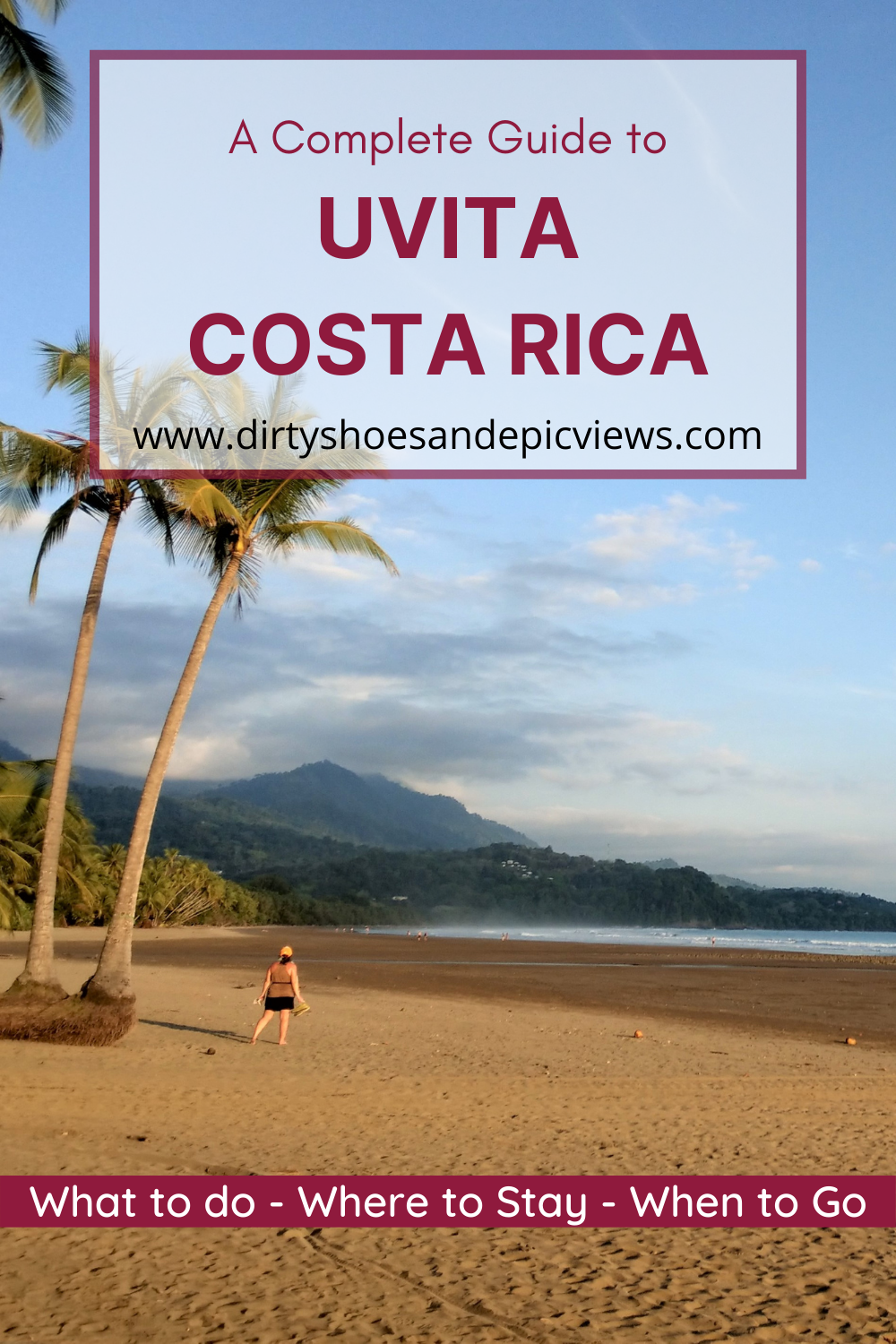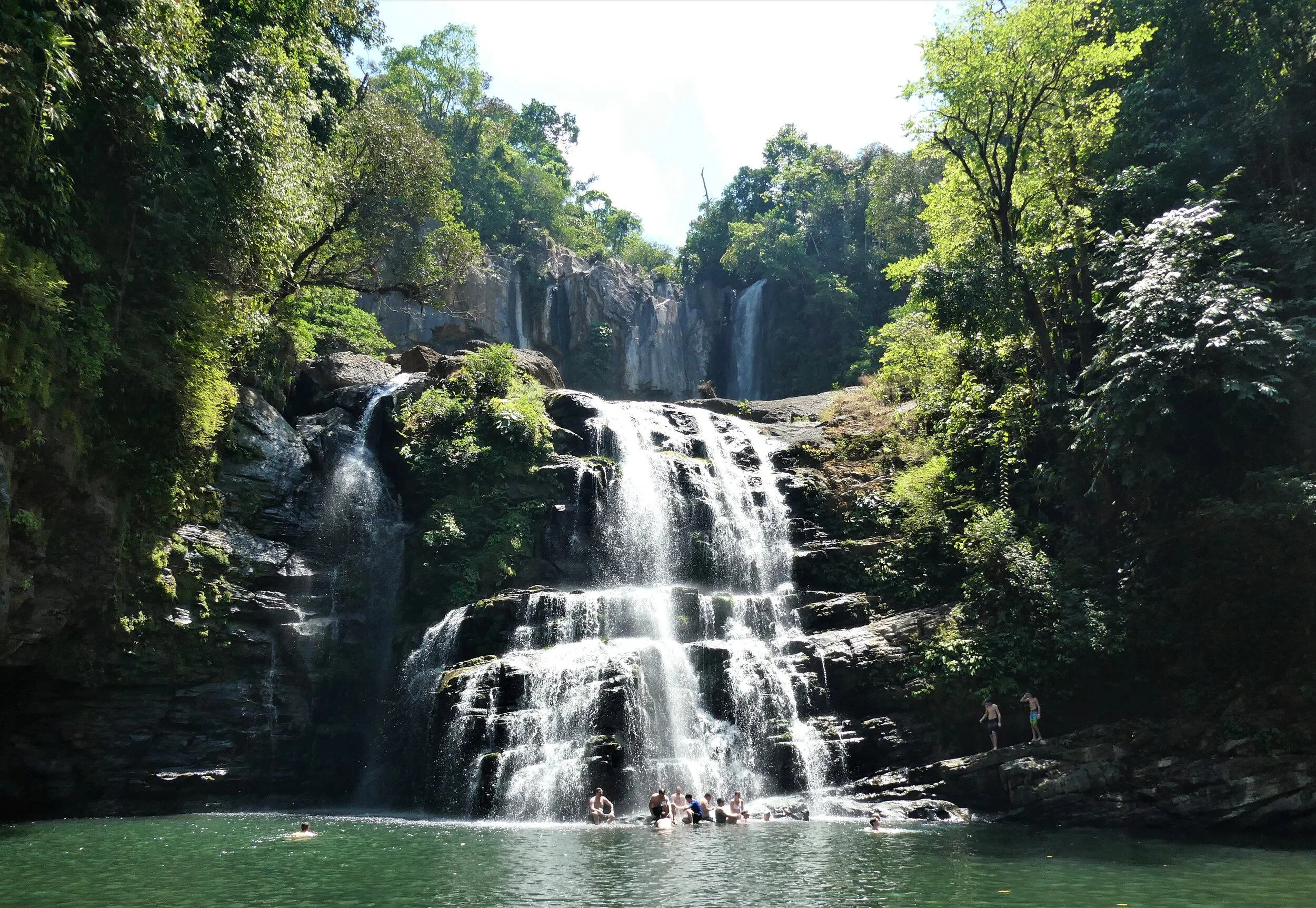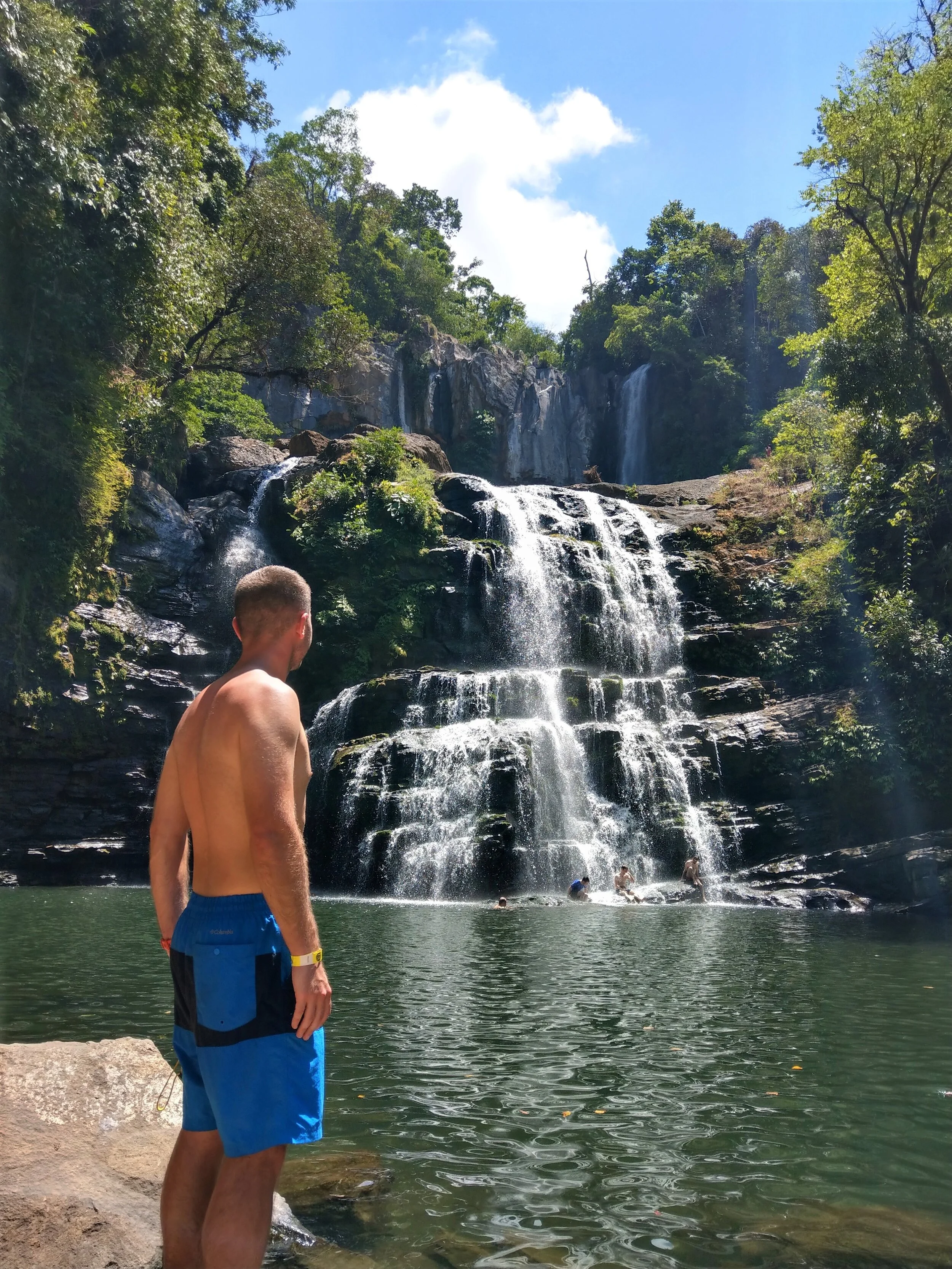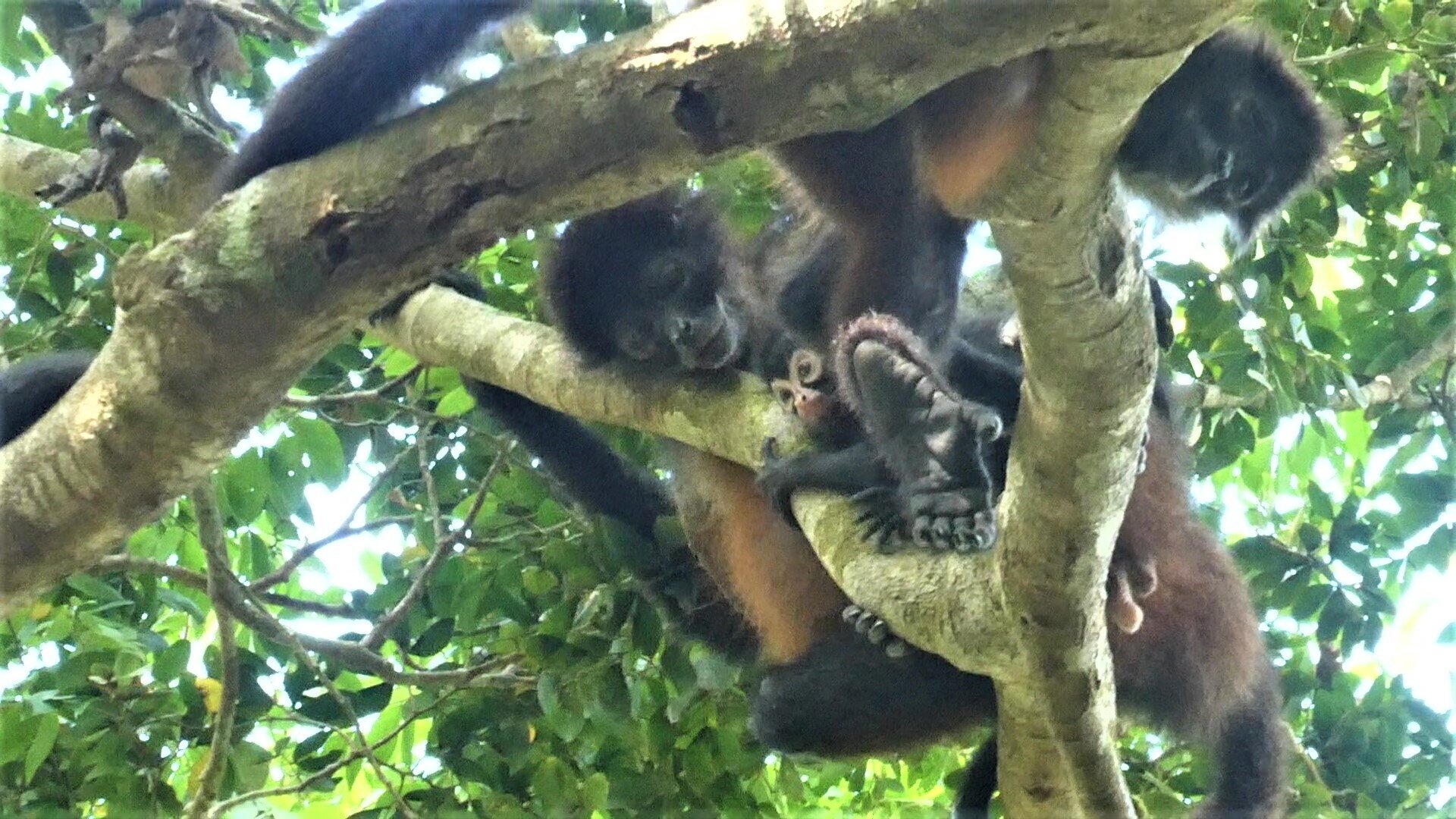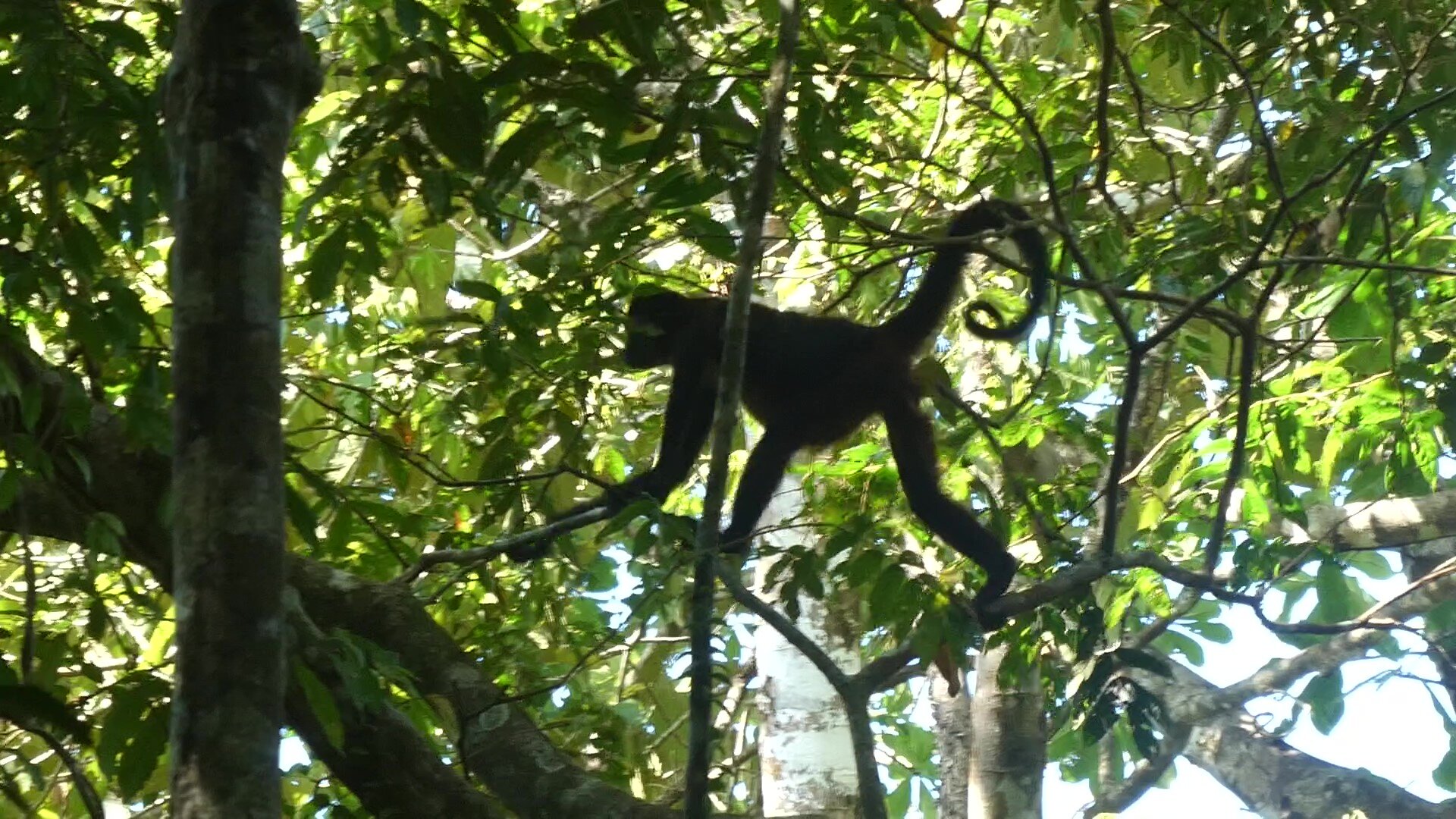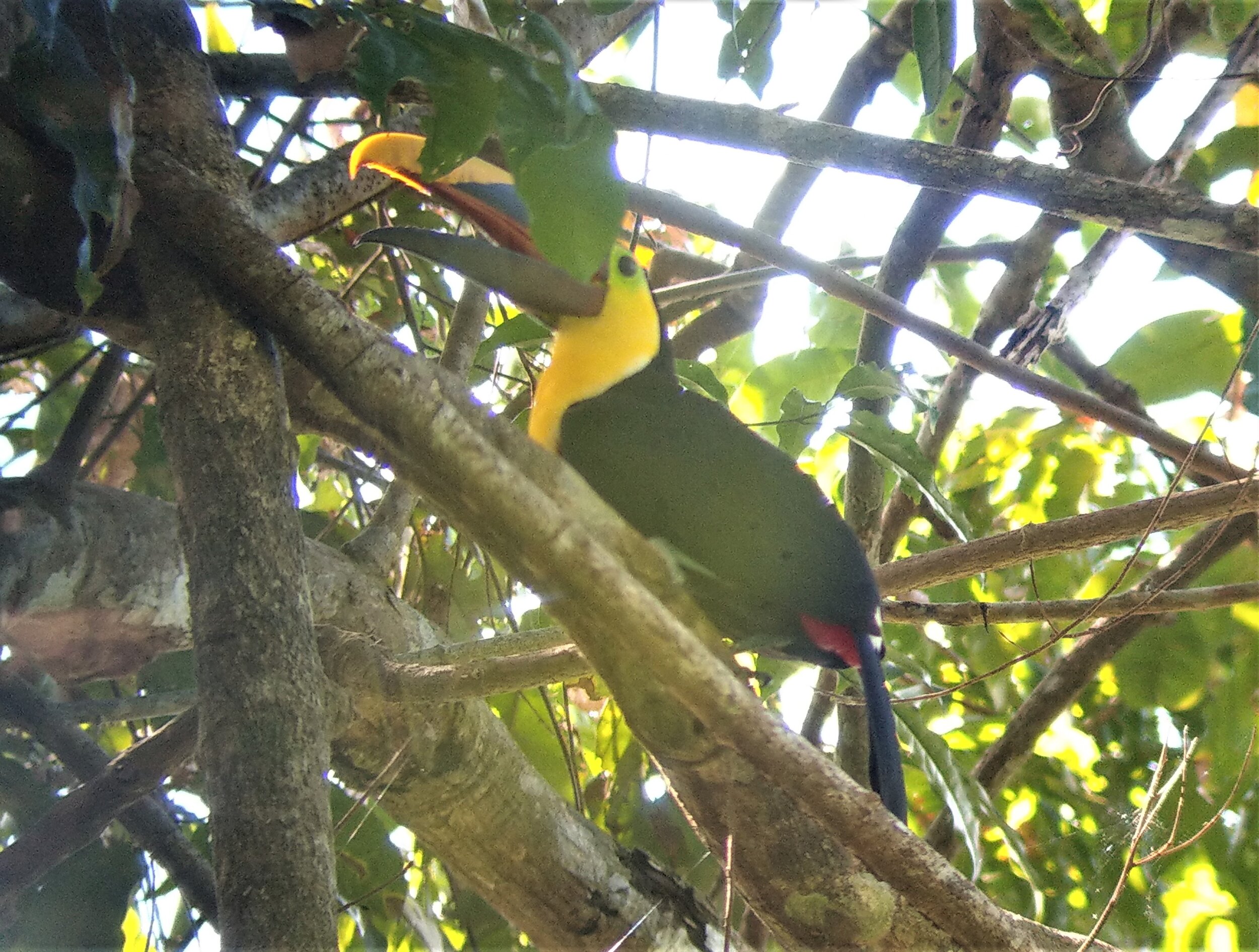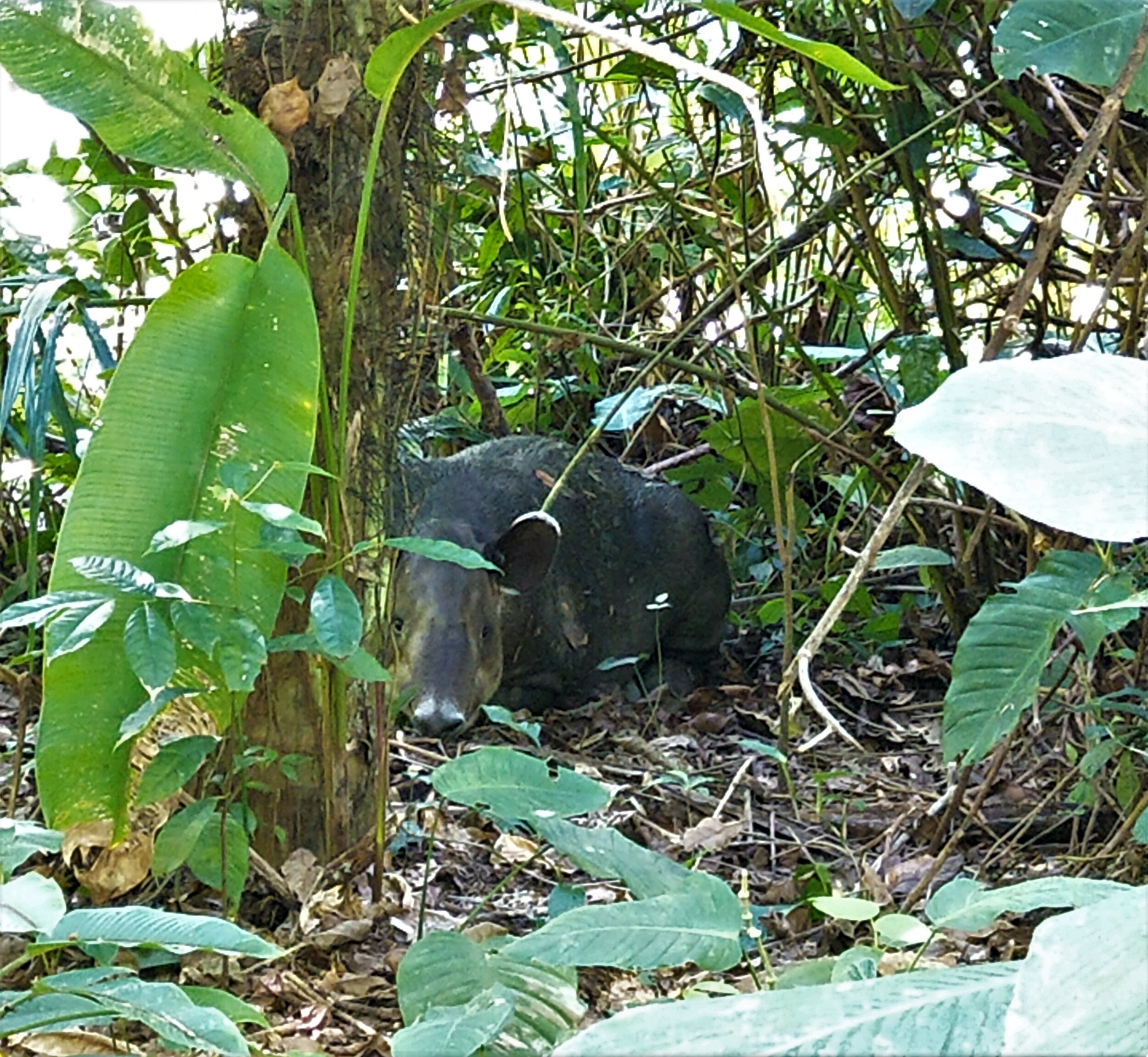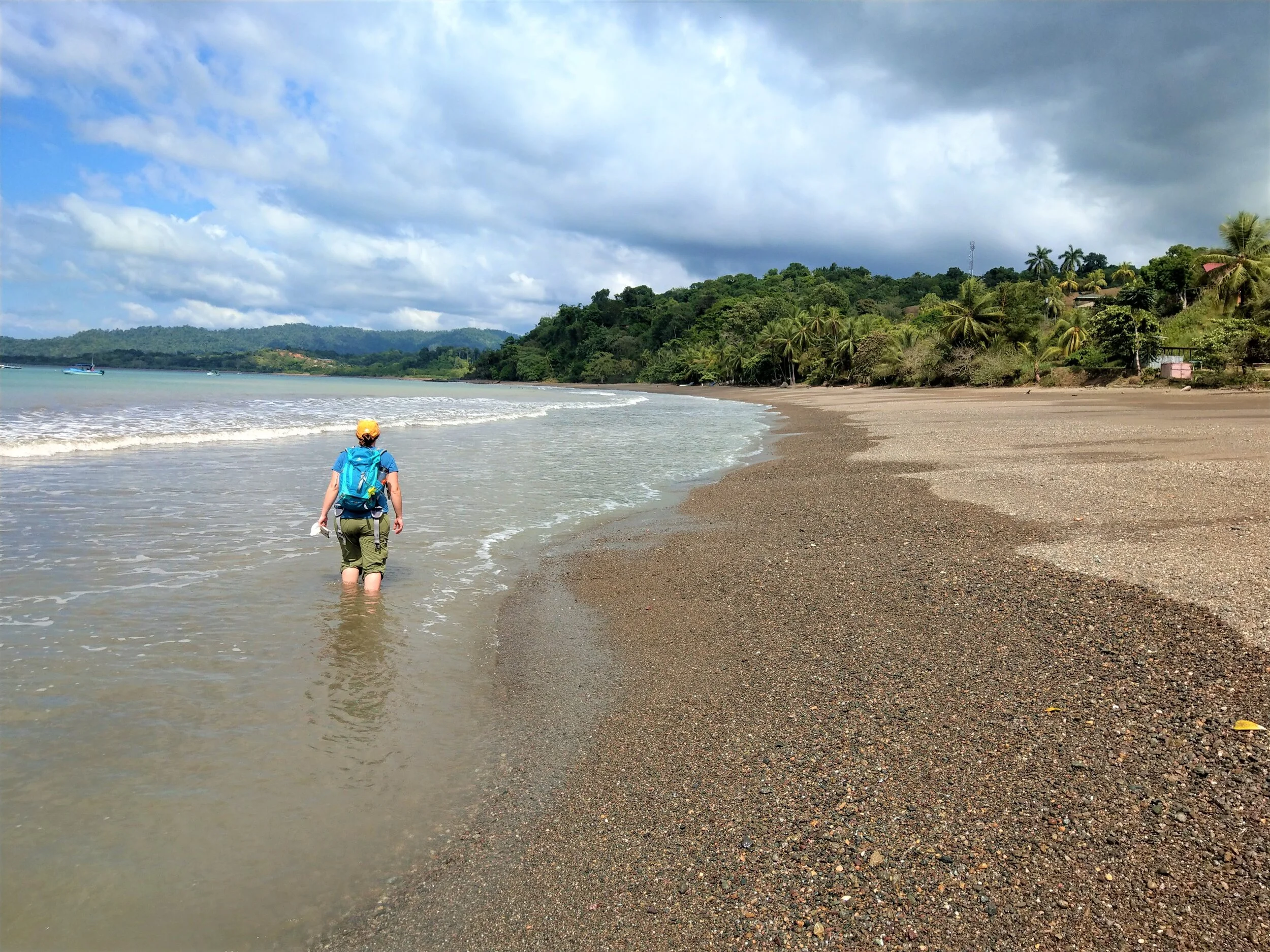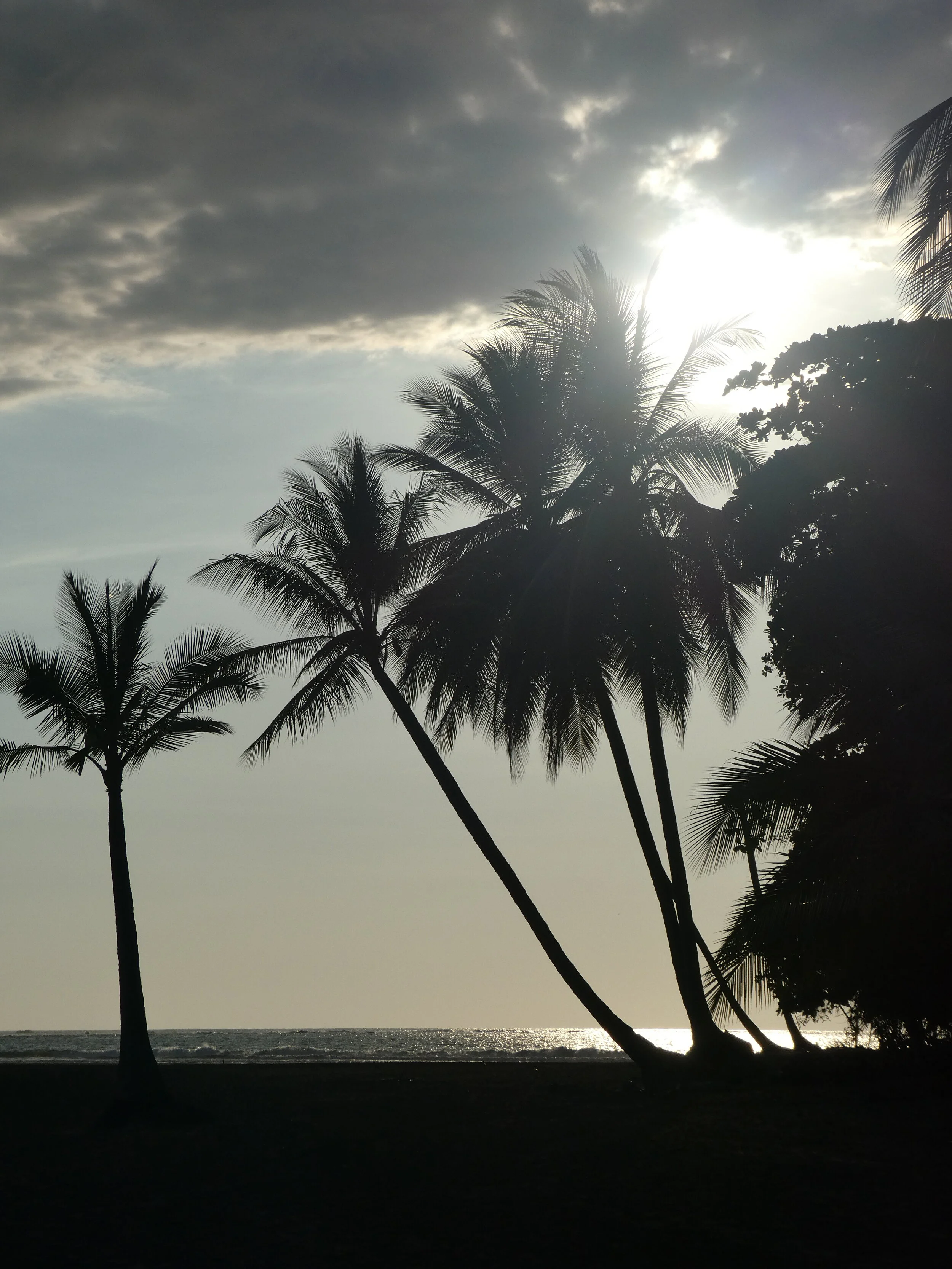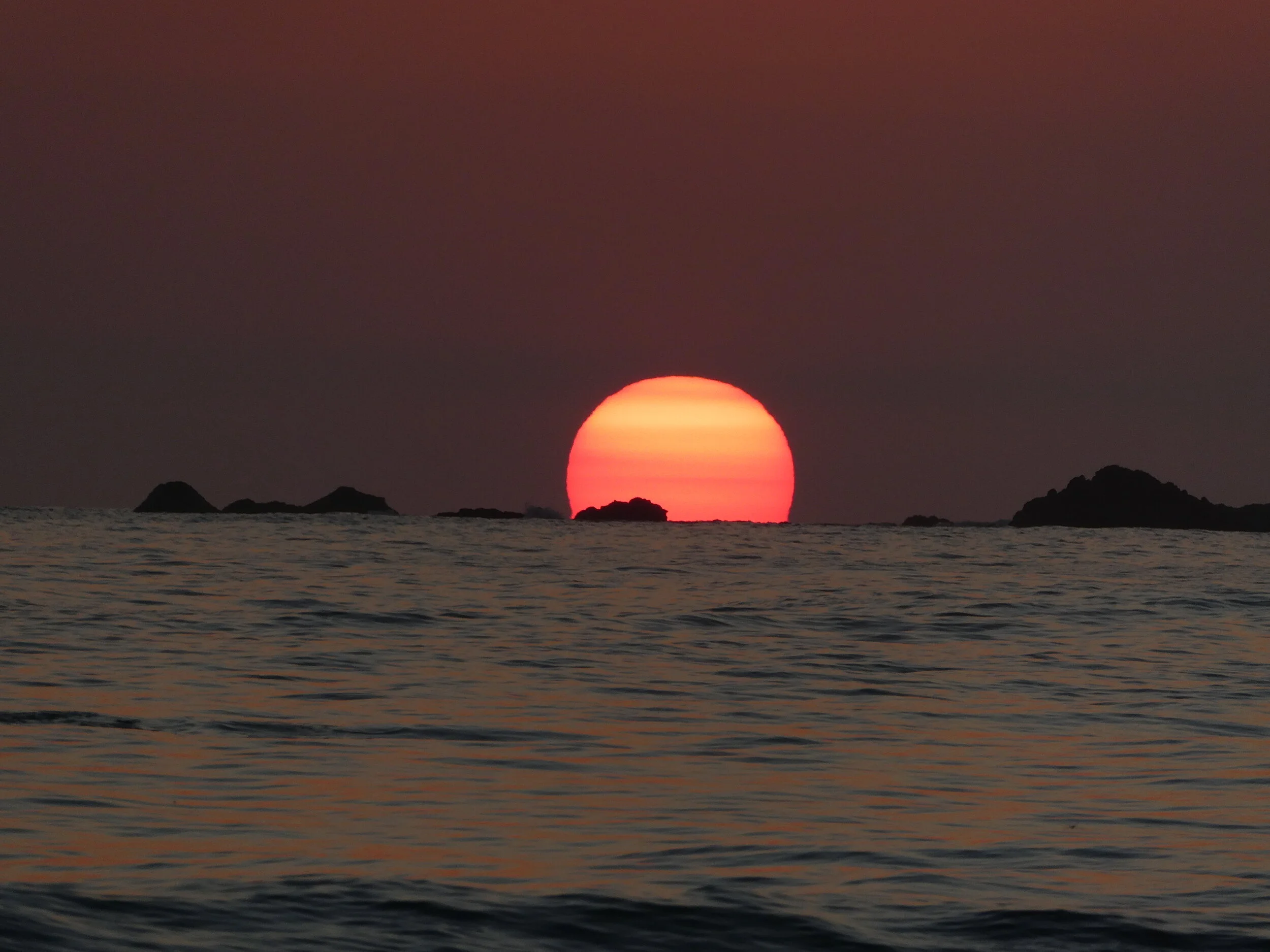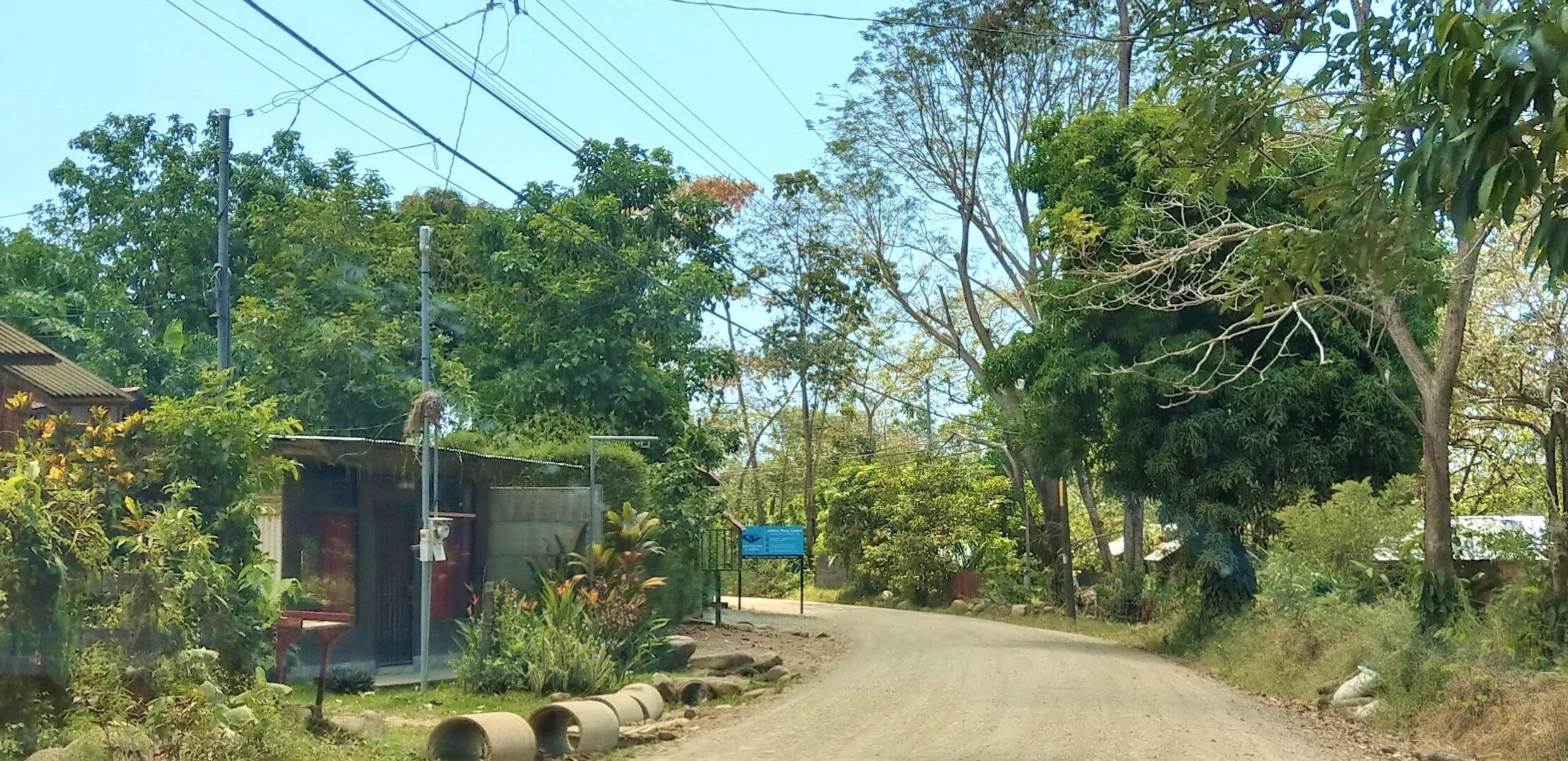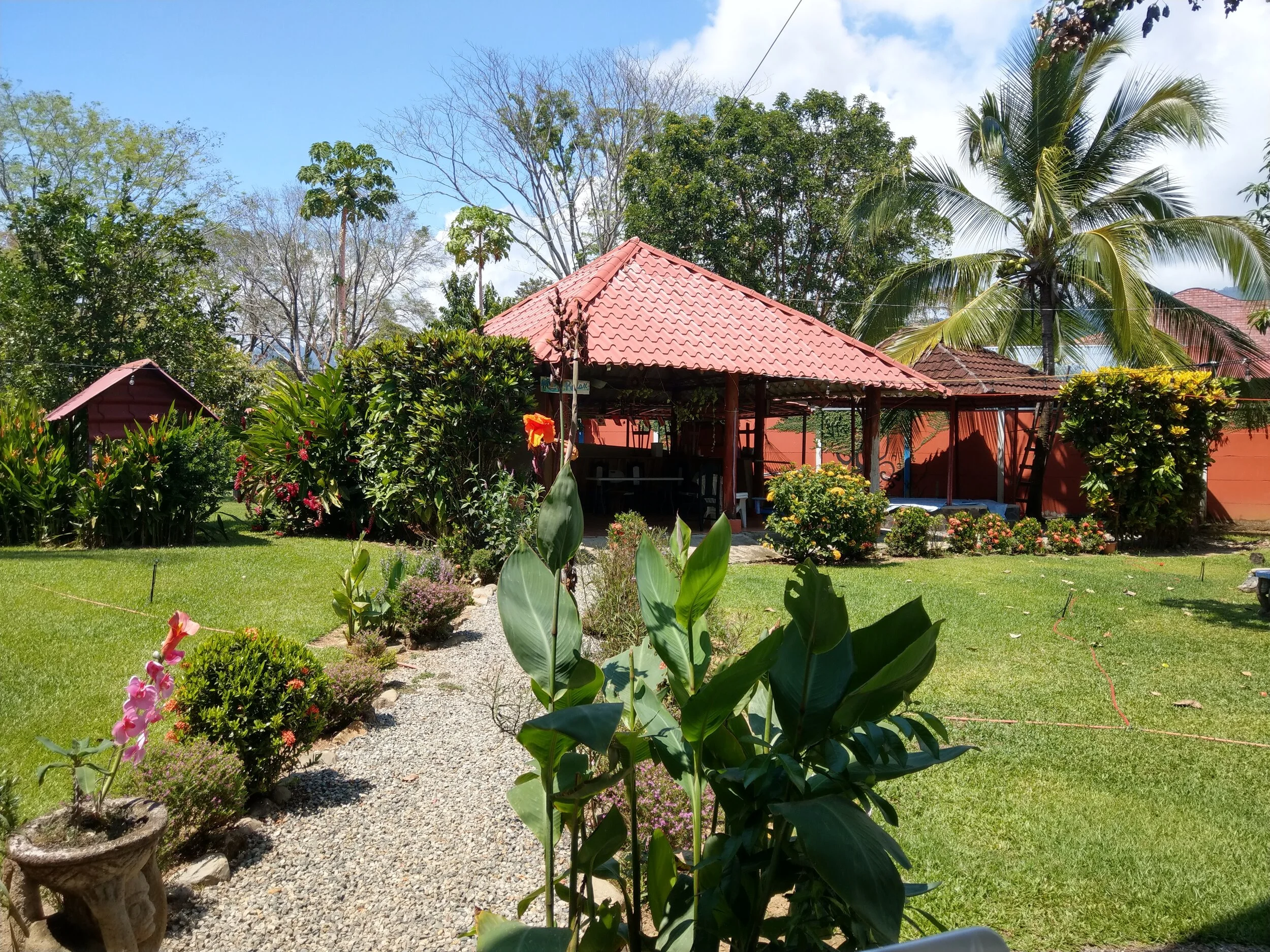10 Best Things to Do In Uvita, Costa Rica
Green lush jungle-filled mountains meeting gorgeous, seemingly untouched, golden sand beaches stretching for miles along a tranquil coastline. Sounds like a dream, right? It’s not… if you’re in Costa Rica. Where can you find this? Uvita!
Uvita is a small town located along the South Pacific Coast of Costa Rica that might not be on many people’s radar, overshadowed by the beaches of the North Pacific or Caribbean. But, we’re here to tell you that Uvita should definitely be on your list. Situated perfectly between the more popular areas of Arenal, Monteverde, and Quepos in the North and the jungles of Corcovado in the South, Uvita makes a perfect pit stop on any Costa Rica itinerary that traverses the Pacific Coast, filled with stunning beaches, unique waterfalls, fun adventurous activities, and killer sunsets, without the crazy crowds of other touristy places throughout Costa Rica.
Oh, and it has the Whale’s Tail. What’s that? Read on to find out! (Spoiler Alert: It’s pretty awesome.)
In this post, we’ll share some of the best things to do in Uvita so you can spend a day or a week in this incredible coastal town (and trust us, you won’t want to leave no matter how long you’re there).
Oh, and after we’ve convinced you that Uvita is a must-see place in Costa Rica and you’ll obviously want to go there, we’ll give you all the info on how! We’ll go over everything you need to know…how to get there, where to stay, when to go, and more!
Article Contents
Best things to do in Uvita
Two day itinerary for Uvita
How to get to Uvita
Best time to visit Uvita
Where to stay in Uvita
Want to save this article for later? Pin it and come back any time!
Best Things to Do in Uvita
Here’s our take on the best things to do in and around Uvita. These activities will be enough to keep you busy for a week or more, but if you have less time, like we did, we’ll give you some ideas later for how you can combine these activities into a few fun-filled jam-packed days.
1. Visit Marino Ballena National Park and the Whale’s Tail
A visit to Marino Ballena National Park is one of the best things to do in Uvita. This park covers about 9 miles of coastline boasting lush rainforest, stunning beaches, mangrove forests, and an abundance of marine life, including the largest coral reef system along the Pacific Coast of Central America.
There are four beaches in Marino Ballena National Park, each accessible off the Carretera Costanera Sur (Southern Coast Highway). They are each pretty well marked by signs so it will be hard to miss. The four beaches are Playa Uvita, Play Bahia Ballena, Playa Colonia, and Playa Pinuela. Each has a ranger station at the entrance, open from 7 am to 4 pm and charging $6 USD per person.
Each beach is great for relaxing, walking along trails adjacent to the jungle where you can possibly spot some wildlife like monkeys and birds, swimming, water sports like kayaking and paddle boarding, and even surfing. Whale watching and snorkeling tours also leave from this park, but more on that below.
The most popular of the beaches in the park is Playa Uvita. Why? Well, the beach is gorgeous, relatively uncrowded, and is home to the Punta Uvita Tombolo, affectionately known as the Whale’s Tail.
I’ll just say this… you can not visit Uvita without making a stop at the Whale’s Tail. The Whale’s Tail of Uvita is a sandbar that stretches 1 km out from shore to a narrow rock formation and is only seen during low tide. Together, this collection of sand and rock resembles the exact shape of a whale’s tail. And what makes it even more special is that this very location is one of the best places in Costa Rica to spot actual humpback whales right from shore, as humpbacks migrate here to breed and feed 9 months out of the year. Nature is pretty freaking cool, right?!
We spent our time at Marino Ballena National Park here at Playa Uvita, and we’ve written up a post all about how to visit the Whale’s Tail, so check that out for a lot more information on this must-do activity in Uvita.
2. Slide down a natural waterslide
Another highlight of not only our time in Uvita, but in Costa Rica overall, was Uvita Falls. While not the tallest, most extravagant, or most eye- catching falls out there, it does have its own appeal. And that appeal is that it is a natural waterslide! The rocks underneath have been smoothed out to create a comfortable and fast ride down into the swimming hole below, putting this on our list of best things to do in Uvita.
How to Get to Uvita Falls
To get to Uvita Falls, you’ll take a left (if coming from the North, a right if coming from the South) on to Calle Uvita (the Uvita Information Center will be at the intersection). After about a kilometer, you’ll take a left- hand turn (there will be a sign for the Uvita Hostel at the intersection). Shortly before this turn, the road will become unpaved and a little rough. Once you turn left, you’ll go up a small hill on a still unpaved road. We managed in our sedan, but I was a little worried our car would get hurt, but it didn’t. Just take it slow and be vigilant of potholes and rocks and you should be fine. After about a half a kilometer, you will see a sign for Uvita Falls on your right which will lead you into the parking lot. Typing in Uvita Falls or Catarata Uvita into Google Maps should take you there.
At the parking lot, there are nice bathrooms to use and change into a bathing suit in. You’ll have to pay 2,000 colones (about $4 USD per person) for entry into the falls.
Visiting Uvita Falls
A short, flat, and well-maintained trail (about 5-10 minutes of walking) will bring you to the falls. It’s a nice walk through a jungly setting that brings you out to the river.
You’ll come across a small swimming hole where you’ll walk along a raised walkway over the side of this pool, and a jumping platform is there for those brave enough (it’s quite high! I couldn’t quite talk myself up to make that jump). To get down to this pool will require some scrambling down some rocks, which might get slippery if they’re wet, so make sure you have some good shoes.
Ahead, you’ll see the main attraction. Walking just a bit further down the trail will take you to Uvita Falls. The trail ends at a rocky pile that surrounds the swimming hole at Uvita Falls. These rocks are wet and slippery and require some scrambling up and over to claim your spot by the swimming hole.
There’s likely to be a lot of people here. We got here mid- morning and there was already a big crowd here, and even guides with small groups of people. But it wasn’t too bad…there’s enough room for everybody, and people generally don’t stay for too long. Many just hang out along the rocks watching people slide down. And I was thankful for the other people sliding down the falls, because if I hadn’t seen anyone do it, I don’t think I would work up the courage to try it myself!
At first look of the waterfall, it’s hard to imagine sliding down! The falls isn’t that tall in reality (maybe about 20 feet high), but seeing it in person made it seem a little bit scarier! When we first got there, we saw a few brave souls slide down, and I’m not gonna lie, it didn’t make me feel much better about it! They were flying down, splashing hard into the water, and the ride down didn’t look smooth or comfortable. BUT, I didn’t come all the way out there to NOT slide down the falls…I had been looking forward to this since learning about this place. So, before I could talk myself out of it, I started the walk up to the top.
There’s a side trail just at the end of the main trail where it meets the rocks. You have to climb up the side of the bank onto a herd path that follows the edge and brings you to the top of the falls. It takes just a few minutes to get there.
From the top, it looked even higher up! Sitting at the edge of the waterfall looking down was a bit nerve-wracking, but I took a deep breath and went for it. And you know what? It was awesome! The rocks were so smooth that it really did feel like a comfortable water slide. You go fast and hit the water hard, but it’s an exhilarating few seconds for sure.
The view from the top of Uvita Falls
We slid down the falls a couple times each and spent some time just enjoying the water. It was a bit cold at first, but felt refreshing in the Costa Rica heat. There’s also fish in the pool, too! Some brave souls, with the help of a guide, made their way over to the side of the waterfall and jumped down from there, but that seemed a little more sketchy to do, as you had to skirt the edge of the cliffside to get to the jumping spot. I was content just watching the others!
Overall, Uvita Falls was a great little place to spend an hour or two. It’s easy to get to, cheap, doesn’t require a hike, has a nice jungly environment and is a unique thing to do in the area!
3. Visit Nauyaca Falls
Nauyaca Falls is probably one of the most popular falls in the country, and for good reason. It’s a multi-tiered fall with both an upper and lower section surrounded by lush jungle. There’s also a pretty big swimming hole at the lower falls…the water is chilly, but super refreshing on a hot day, and you can stand under the falls themselves or jump in next to them from a side ledge. It’s one of the best day trips you can take from Uvita.
Nauyaca Falls requires a bit more effort to get to than Uvita Falls, as it is 4 km away from the trailhead parking lot, but you have several options to get there. You can hike the 4km each way, opt for a horseback riding tour, or hop on the back of a truck that will drive you there. For the latter two options, an advanced reservation is recommended since it is a popular place, although we did see some people booking truck tours at the office the morning of.
How to Get to Nauyaca Falls
From Uvita, the falls are roughly 30 minutes away. You’ll drive North along the Carretera Costanera Sur for about 15 minutes or so until you hit Dominical. Once in Dominical, you’ll pass over the Rio Baru and take the next right onto 243 towards Platanillo, a well-marked intersection that usually is just passed a police checkpoint (we never got stopped here).
Drive about 10 km up this road and you will see the well-marked office for Nauyaca Falls on your right. You’ll pay at this office if you’re hiking, or meet here for the horseback riding or truck tours. If you’re hiking, you’ll then continue driving past the office and take your first right. This is a steep 2km dirt road that will bring you to the trailhead. A 4x4 car is highly recommended for this part, but if you don’t have one, you can leave your car at the office and walk from there.
How long does it take to visit Nauyaca Falls from Uvita?
The trip to Nauyaca Falls is a half day trip from Uvita. It will take you about an hour of round trip driving to and from Uvita, and then the amount of time you are at the falls depends on the type of tour you decide to do. Hiking roundtrip will take about 2 to 3 hours, but a few hours at the waterfall for swimming and relaxing should be factored in. Horseback riding tours begin about 7:30 am and end around 1:30, while truck rides leave throughout the day and last about 3 hours (an hour of roundtrip driving with 2 hours at the falls). So, you can plan for Nauyaca Falls in the morning and still have time to pack in another activity or two on the same day.
4. Beach Hop or Try Your Hand at Surfing
There are tons of beautiful, picturesque, palm-tree lined jungle-meets-the-sea type of beaches all along the Pacific Coast, particularly in the areas of Uvita and Dominical (just 20 minutes North of Uvita) to take your pick from. No matter which you choose, you’re likely not to be disappointed. Relaxing on a piece of paradise is one of the best things to do not only in Uvita, but also one of the best things to do in Costa Rica in general!
Many of the beaches are well-marked off the Carretera Costanera Sur Highway, and putting the name of a beach into Google Maps is usually pretty reliable. Getting to some beaches may involve dirt roads, so you’ll have to look up whether a 4x4 is needed or if a slow- going sedan would do the trick. We found in this area that as long as the road is flat and dry, taking it slow in our car was fine.
The great part about beaches in this area is that they are relatively uncrowded. Even Playa Uvita, a popular spot because of the Whale’s Tail, felt pretty secluded. Some of the beaches that are well-known for surfing, particularly Playa Dominical, can be a bit busier.
When choosing your beaches of choice, make sure you know which ones are better for surfing versus swimming, as riptides and currents are strong here. There are many surf camps and surf lessons available all along this area so help you try your hand at some surfing in beaches more suited for beginners.
Outside of the National Park, some options for beaches include:
Playa Hermosa: This is a local beach just north of Playa Uvita that’s a favorite among locals for surfing and gorgeous views. The waves here are said to be good for beginner and intermediate surfers, and swimming is best at low tide.
Playa Ventanas: A small bay located just south of Uvita with calm waters good for swimming. On the North end of the beach, there is a set of caves that can be explored at low tide.
Playa Arco: A small beach just south of Uvita that can only be accessed at low tide and has a cave you can explore.
Playa Linda/Matapalo: Two connected beaches that are 15 minutes further North from Dominical, but trust us, it’s worth the drive. You’ll follow a road off the Costanera Sur and simply park under the trees alongside the beach. These two beaches run into each other, creating a long golden sand beach as far as the eye can see, and are super quiet and mostly empty, visited primarily by locals. That, combined with the quintessential Costa Rican jungle-meets-the-sea secluded island vibe, easily made this a highlight of my time in Costa Rica. The water creeps up onto the beach in thin veils creating gorgeous reflections, and the waves are fun to play in as long as you don’t go out too far. Beginner surfers can come here for lessons and surf camps. Make sure to bring all your own food and water here for the day.
Playa Dominical: This is a world-renowned beach for surfing, located in a laid back surf town with restaurants, bars, shops, and plenty of accommodations. This beach is a bit more crowded than the others because of this.
Playa Dominicalito: This is a smaller less touristy beach than Playa Dominical, and better for beginner surfers.
Some tips when visiting beaches along the Central and South Pacific Coast:
Be careful of riptides and currents…they can get pretty strong anywhere along the Pacific Coast. Use your judgment and don’t go in too far. And avoid swimming in the well-known surfing destinations such as Playa Dominical. For swimming, stick to calmer bays like those found in Playa Ventanas or Pinuela (in the National Park).
Don’t bring valuables with you on the beach or leave them visible in your car.
Bring sunscreen and reapply constantly!
Make sure you have cash on hand in case you need to pay a parking attendant for to watch your vehicle (not all beaches do this). 2,000-3,000 colones is generally standard.
The sand can get hot. Like, fire on your feet hot.
The jungles that meet the beaches here are teeming with wildlife. Take some time to look closely in the trees, and with some patience, you might spot a toucan, a macaw, some monkeys, or more.
5. Go on a snorkel excursion
Costa Rica isn’t just teeming with wildlife on land. There’s a whole underwater world to explore just off shore!
Just off the coast of Marino Ballena National Park lies the largest coral reef system off the Pacific side of Central America, home to 18 species of coral and countless marine life. Three islands, called Las Tres Hermanas (The Three Sisters), are strung together by this reef and make good snorkeling destinations. Guided boat trips will take you on half day excursions out to these islands and around the Whale’s Tail for snorkeling.
If you really want good snorkeling, though, we hear Cano Island is where it’s at. This island, located about an hour and half boat ride from Uvita, is surrounded by a large marine biological reserve and has the best snorkeling in Costa Rica, with the opportunity to see turtles, rays, reef sharks, and dozens of fish species. It is pricey, however, reaching upwards of $145 or more for a nearly full day trip.
6. Do a water sport
There are plenty of places to rent a kayak or stand up paddle board (SUP) along the beaches of the Pacific Coast.
There are also lots of tour guide operators who offer guided kayaking and SUP tours. These tours can take you either through the calm waters running through mangroves to spot wildlife like monkeys, sloths, birds, and caimans, or into the ocean around the Whale’s Tail or to the beach- side caves, such as those near Playa Ventanas, and may even include some snorkeling as well. A half day tour will run you somewhere around $75-85 USD.
7. Go whale watching
Whale watching is often considered the must-do activity in Uvita. That’s because it is one of the best places for Humpback whale watching in the world. Humpback whales from the North migrate here for feeding and breeding between December and April and those from the South visit here between July and November. In fact, whales, and sometimes dolphins, can often be seen simply from the shore…but that requires a good eye and some luck. Your best bet is to take a boat tour, and there are plenty of options for half day guided excursions that will take you out for an up- close look. These cost about $80 or more.
8. Visit Corcovado National Park
From Uvita, you have the chance to visit one of the most biologically diverse places on the planet. Yes, the planet. It’s called Corcovado National Park, and it’s a vast jungle situated on the remote Osa Peninsula in the southwest corner of Costa Rica.
Corcovado hosts a huge diversity of plants and animals, including sloths, all four types of monkeys found in Costa Rica (squirrel, howler, white-faced capuchin, and spider monkeys), agoutis, peccaries, coatis, tapirs, jaguars, pumas, iguanas, and all kinds of snakes, frogs, and birds, and so much more. In order to visit here, you must go with guided tour, and you can go either for a day trip or on a multiday adventure, staying overnight in ranger stations located inside the park.
The main access points into Corcovado are from Drake Bay or Puerto Jimenez, which are located right on the Osa Peninsula itself. However, if you don’t want to make the journey yourself to one of these gateways, there are tours that leave from Uvita and go to Corcovado. From Uvita, your only option for visiting Corcovado is take a day trip to San Pedrillo Ranger Station. Located a few hours away by boat, San Pedrillo has several trails that are great for bird watching and spotting animals in their natural habitat. The tours consist of the boat ride there and back, lunch, and a guide who will take you around the trails for several hours teaching you about the jungle and inhabitants and finding all the hard-to-spot wildlife for you.
However, if Drake Bay is not something you can swing for your trip, visiting the jungle for a day from Uvita is a perfectly viable and convenient option to get the Corcovado experience and try your luck at spotting rare and endangered Costa Rican wildlife.
9. Watch the Sunset
Sunsets in Costa Rica are pretty killer. I’ll just let the pictures do the talking here.
See? I don’t think I need to say too much here other than be sure to get out to the beaches in and around Uvita to see the sunsets as much as you can.
10. Visit a Wildlife Refuge
This is something that we didn’t do while we were in Uvita so we cannot say too much about this and will refer to other resources here. But, we did see a number of wildlife refuges in the area that may be worth a visit if seeing some Costa Rican wildlife is on the top of your to-do list and you aren’t planning visiting places such as Corcovado or Manuel Antonio, which are two of the best places to see wildlife along the Pacific Coast.
Some places that may be worth checking out include:
Hacienda Baru Wildlife Refuge in Dominical: Includes opportunities for guided and self-guided hikes along beaches and through forests, night tours, and zipling.
Parque Reptilandia in Dominical: This park is located right by Nauyaca Falls and houses exhibits of snakes, lizards, turtles, crocodiles and colorful poison dart frogs.
Recommended Two Day Itinerary in Uvita
Uvita is likely to be a short stop in between other main points of interest on your Costa Rica itinerary (and if you are planning more time here, then that’s awesome and we are jealous) so you might have to pick and choose which activities you do. We only had two days to spend here on our way between Quepos and Drake Bay, and loved every one of our choices.
If you only have two days in Uvita, here’s our suggestions for how to spend it.
Day 1: Wake up early and head to Nauyaca Falls. Get there between 7 and 8 am to try to get to the falls before the big tour groups. Spend the morning here (whether you hike, horseback ride, or truck in), and get back by the early afternoon. On the way back to Uvita, stop at one of the beaches along Dominical for some swimming or surfing, and end the day with a fabulous sunset.
Day 2: Head to Uvita Beach in Marino Ballena National Park and explore the Whale’s Tail and relax on the beach, or maybe rent a kayak or SUP and explore around the coastline. In the afternoon, head over to Uvita Falls and take a ride down the natural waterslide. Head back to one of the nearby beaches to watch another gorgeous sunset.
Keep in mind that we stopped in Uvita on our way back from Drake Bay where we had to the opportunity to go to Corcovado and Cano Island, so we didn’t need to do those excursions here. So of course, you can take any of the options on our list and fit them into your Uvita itinerary however you like based on your must-do’s!
How to Get to Uvita
Getting to Uvita is fairly straight forward, as it sits right on the South Pacific Coast along the Carretera Costanera Sur (Route 34).
Having a car here is ideal if you want to go the waterfalls and different beaches in the area. But if you don’t rent a car, you can stay down town in Uvita so that you can walk to Playa Uvita and the Whale’s Tail. To visit places like Nauyaca or Uvita Falls, you can book tours through your hotel which would provide transportation, and/or you can hire private transportation to venture to places further away.
A typical road in Uvita
Driving to Uvita
From San Jose: The drive is about 3 hours and you’ll pass through 4 tolls, the highest of which was 760 colones.
From Quepos: Uvita is just an hour south of the popular Manuel Antonio along the Costanera Sur Highway.
From Sierpe: Sierpe is the gateway into Drake Bay on the Osa Peninsula and lies just an hour south of Uvita along the Costanera Sur.
Best Time to Visit Uvita
The Pacific Coast of Costa Rica has two main seasons…dry and wet. There are perks to visiting at either time. The coast is generally hot all year round, and the further south you go, the more humid it gets, so, Uvita will be a pretty hot and humid place all year round.
The dry season is from December to April and is, well, dry. It sees very little rainfall, making it an ideal time to come if you really want to take advantage of your days. However, the crowds are a little bit bigger and things tend to be more expensive because of that.
The wet, or “green” season sees more rain along the Pacific Coast, but the rain generally falls in the afternoon, leaving mornings clear. There are fewer people and discounted rates for things like hotels. Plus, because of all the rain, the jungle becomes super lush and wildlife is more active (though we had no problem finding wildlife when we came in the peak of the dry season).
Timing your visit also depends on what activities you’d like to do in Uvita:
For whale watching, you have a pretty big window of opportunity, with whales migrating here all months of the year except December to January, and May to June.
If you are coming to Uvita for snorkeling, the dry season is the time to go. During the wet season, constant rains cause rivers filled with sediment to flow out into the ocean, causing murky conditions with lower visibility.
If you want to experience the magic of sea turtles nesting here, then come between June and November to see nesting Olive Ridley and Hawksbill turtles in this area. Their nesting peaks somewhere in between September and October each year.
If you’re a serious surfer, the best conditions here are between May and November, though it is possible to surf all year round.
If waterfall hunting is your goal, then your experience will vary depending on the season. Nauyaca Falls for example, is very strong in the rainy season, and you can’t swim in its pools like you can in the dry season.
If you are looking to venture to some off the beaten path locations, some rugged backcountry dirt roads may become impassable during this time, and a 4x4 would be essential.
Where to Stay in Uvita
There are plenty of accommodations in Uvita for every budget, ranging from hotels up in the mountains with gorgeous ocean views, to cheap dorm beds in hostels. We are budget travelers and so looked at only a specific niche of accommodations and found booking.com to be particularly helpful in seeing all of our options.
When looking for a place to stay in Uvita, some things we considered were:
Room type: In the lower budget category, choices range from single beds in dorm-style rooms, to semi-private rooms with 2 or three beds and a shard bathroom, to private rooms in hostels with or without private bathrooms, to small apartments. We were looking particularly for private rooms (we are kind of over the dorm style conditions, even though they are so cheap… like less than $10 USD per night cheap!
Atmosphere: In Uvita, you have all types of options to choose from. For example, some places have authentic jungle settings, open air accommodations, rainforest views, and wildlife often found right on the property. Other places have more of a beachy downtown feel.
Meals: Many places include breakfast, which is always a plus. They are usually pretty modest, and include fruit and cereal or toast.
Air conditioning: It gets hot and humid and Uvita and having air conditioning would be a huge benefit. None of the places we stayed at had air conditioning, just fans, and in the South Pacific, it made for some super hot sleeping conditions. But we were always so tired from the day’s activities that we still had no trouble sleeping!
Location: The town of Uvita is surrounded by beaches to the West and jungly hills to the East, with accommodations everywhere in between. Often, places up in the hills are on dirt roads that require 4x4, so check to make sure to ask if access to your place requires a 4x4 first if you don’t plan on renting one. Places closer to the beach right in town are located along flat roads at sea level, but still, some of these roads are dirt. We found that driving along these roads is doable with a sedan if you just take it slow and stay vigilant, but people often say a 4x4 for the Central Pacific is way better to have for comfort and to access off the beaten path places.
Private bathroom: Some places may list a private room, but check the fine print to see if it actually has a shared bathroom.
Ratings: Booking.com does a good job of showing overall rating and reviews of places.
Also note, Costa Rica generally charges a 13% VAT tax. Some of the listed prices include this tax and some do not, so make sure you are clear on which ones do.
We personally stayed at Yubarta Lodge, between Playa Uvita and the Costanera Sur. It was just outside of the main down town area, in a quiet neighborhood on a dirt road (passable with a sedan). We loved our stay and highly recommend it. It’s a quiet place with simple rooms and shared bathrooms, an open air kitchen, a pool, and beautifully kept grounds. And it was just 700 meters from Playa Uvita, so easily walkable to the beach and the Whale’s Tail.
Are you planning a visit to Uvita soon and want to know more? Let us know!
Have you been to Uvita and have anything to add? Comment below!

